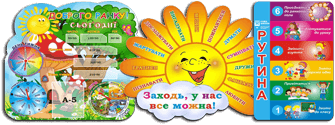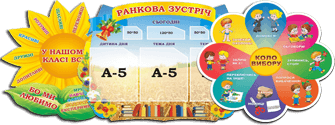План-конспект уроку англійської мови для студентів 3-го курсу на тему “Неперевершений шедевр”
Автор: вчитель англійської мови Губій Катерина Вікторівна
Тема: An Unsurpassed Masterpiece
Цілі: 1) Практична:
- розвиток лексичної навички (активне вживання лексичних одиниць: to expose the dark sides of life; a knack for smth.; to have one’s ups and downs; a sought-after artist; in the foreground / background; a sketch);
- удосконалення вміння підготовленого монологічного мовлення (опис картини за схемою);
- удосконалення уміння ознайомлюючого читання (на основі тексту Van Gogh);
- удосконалення умінь непідготованого монологічного мовлення (+ вер-бальна опора);
- розвиток граматичних навичок, навичок перекладу (вправа на переклад).
2) Освітня: поглиблення знань студентів інформацією про відомих художників і їх картини, а також про деякі мистецькі напрямки (фавізм, пуантилізм).
3) Розвивальна:
- розвиток мислення студентів (під час опису картини за схемою, виконання вправи на переклад);
- розвиток уваги;
- розвиток пам’яті (при перекладі лексичних одиниць і їх запису на дошці, під час опису картини).
4) Виховна: розвинути мистецькі смаки студентів шляхом обговорення творів мистецтва.
Схематичний план уроку
І. Початок уроку
- Мовленнєва розминка (10 хв.).
ІІ. Основна частина уроку
- Перевірка опису картини за схемою (10 хв.)
- Перевірка опрацьованого вдома тексту «Герніка 2» (7 хв.)
- Непідготовлене читання тексту ‘Van Gogh’ (15 хв.)
- Непідготовлене монологічне мовлення (10 хв.)
- Вправа на переклад (10 хв.)
- Індивідуальне завдання (Pop-art) (10 хв.).
ІІІ. Заключна частина
- Підсумки (3 хв.)
- Домашнє завдання (3 хв.)
- Оцінки (2 хв.).
Обладнання: картки зі словами пісні ‘A Work of Art’ by Demi Lovato; аудіо- запис вказаної пісні; картка зі словами для перекладу; схема опису картини; роз даткові матеріали (опрацьований вдома текст «Герніка», текст «Ван Гог», схема злетів і падінь голландського художника Вінсента Ван Гога, картка із вправою для перекладу, картки з домашніми вправами); наочні матеріали (автопортрет Ван Гога (1886 р.),) репродукція картин «Червоні виноградники в Арлi» (1888 р.), «Зоряна ніч» (1889 р.), «Три соняшники в вазі» (1888 р.); портрет Пабло Пікассо, «Герніка»). Вказані матеріали додаються.
Завантажити додатки до уроку на диск
Хід уроку
І. Початок
- Мовленнєва розминка (The song ‘A Work of Art’ by Demi Lovato)
T.: Good afternoon, everyone! How is it going on? Life is not a bed of roses. It is full of ups and downs, just like art. Let’s listen to the song called A work of Art and say in what way art resembles life.
ІІ. Основна частина
- Перевірка опису картини за схемою
T.: What do you think, has Demi Lovato gained a firm footing in singing?
Still, the artists whose paintings you described at home are sure to be sought-after.
Work in pairs. Describe the picture to your partner according to the scheme without mentioning its name. The partner asks questions with active units to guess what it is called. Then change the roles.
T.: Whose description do you find most thought provoking?
T.: S1, present the description. S2, count active units. S3, be ready to say if the description corresponds to the scheme. The rest ask questions with active units to guess the name of the picture.
Meanwhile, one student will translate some active words on the board.
T.: Look at the board and correct mistakes if any. Ask the student at the board questions with the words they’ve just translated as if this student were an art critic.
3) Перевірка опрацьованого вдома тексту «Герніка»
T.: Are there any students in the group who described a picture, which exposes the dark sides of life? Can we say that ‘Guernica’ exposes the dark sides of life, too?
T.: At home, you read the article about it. Discuss it in pairs. Say in what way ‘Guernica’ exposes the dark sides of life and how the symbols help to render the painter’s conception. Don’t forget to use the active units. Report on your partner’s point of view.
- Непідготовлене читання тексту ‘Van Gogh’
T.: I’ve brought a picture for you, which has a direct reference to the text you are now going to read. Scan the text to get its main idea. Say, what picture it is (The picture is The Red Vineyard – the only painting, which van Gogh sold during his lifetime.).
T.: To understand this text better, you’ll need some words. S1, read out the first word, please. S2, translate it… :
to succumb [səʹkʌm] – бути переможеним, поступитися, вмерти;
fauvism [ʹfəuvız(ə)m] (rom French fauvisme, from fauve ‘wild beast’) – a style of painting with vivid expressionistic and non-naturalistic use of colour that flourished in Paris from 1905 and, although short-lived, had an important influence on subsequent artists, especially the German expressionists;
charcoal [‘ʧɑːkəul] – вугільний олівець.
T.: Read the text. Use the words and word combinations from The Chart of van Gogh’s Ups and Downs in the context with active units.
T.: S1, read out the example.
- g. The would-be gifted artist who would later far exceed all his contemporaries was born into the family of a protestant minister.
- Непідготовлене монологічне мовлення
T.: Work in pairs. Using the chart think up the speech of an art historian who expresses regrets concerning van Gogh’s life. Be ready to present your speech.
- Вправа на переклад
T.: I see that you have a knack for using active units. That’s why I suggest translating some sentences. I’ll dictate the sentences, and you will put down the translation in your exercise-books. The students I’ll indicate will read the sentences out, and the rest will check.
- Індивідуальне завдання
T.: What mature artists have been mentioned during today’s class? Has anything been said about Andy Warhol? Do you know anything about him?
S1, S2: …
T.: He’s a representative of pop art. Now, S1 will tell us about this genre of art and the painter.
ІІІ. Заключна частина
- Підсумки
T.: To sum it all up, what ideas on art has today’s class molded?
- Домашнє завдання.
T.: At home, do Ex.1, 2 on the handouts. In Ex. 1 you must do a gap filling with the above given words. Ex. 2 is for translation. S1 will prepare a report about expressionism as an individual task. Make it according to the plan. Use active words and phrases in your report.
- Оцінки.
APPENDIX
- The translation card
Translate the phrases into English.
- викривати темні сторони життя;
- вміння до чогось;
- мати злети і падіння;
- митець, який користується популярністю;
- на передньому / задньому плані;
- ескіз.
- The exercise for translation
Translate the sentences into English using your active vocabulary.
- – Що міг створити цей підмайстер? Він не дотягує навіть до рівня початківця.
– Ти, напевно, помиляєшся. Мабуть, ти не побачив польоту фантазії та глибоку сутність його задуму. Ти міг би й краще оцінити його копітку роботу.
- Не може бути, що Пітер зробив щось із нічого. Його колаж сповнений клаптів паперу, які злилися воєдино і створили неперевершений натюрморт. Можливо, його надихнула “Голова бика” Пікассо, яка досі зберігає оригінальність. Шкода, що Пітер не досягнув визнання відомих критиків.
- Я бачу, що мисленні образи Джона Мартіна втілені у життя, наче вони відчутні на дотик. Якби ви побачили його картину “Бенкет Бальтазара”, вона б виявилася бентежливою. Ця картина змушує обивателів розмірковувати про сутність життя.
- The Scheme for Describing a Picture
- This is a picture… by…
- Information about the author, his artistic style:
- He / she is / was a gifted / sought-after / genius… portrait / landscape… painter.
- He / she is / was a representative of realism / impressionism…
- Some words about the peculiarities of the style.
- Time of creation.
- Type of the picture:
- The painting is done in oils / watercolours.
- a still life / a self-portrait…
- Describing the picture itself – the position of the objects in the picture:
- In the foreground / background…
- Colours.
- Personal attitude.









